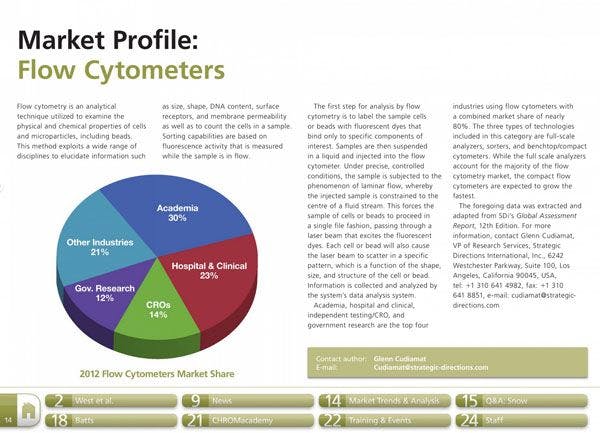LC–MS Deconstructs the "Poppy Seed Defense"
LC–MS Deconstructs the "Poppy Seed Defense"
Scientists at King’s College London in London, UK, have discovered a new metabolite in urine that is an indicator of heroin (3,6-diacetylmorphine) intake. The paper published in Drug Testing and Analysis suggests that the marker can be used to rule out poppy seed ingestion and confirm illicit drug intake.Heroin is formed by the reaction of morphine in opium with acetic anhydride, and in the body it is metabolized to the primary metabolite 6-monoacetylmorphine (6-MAM). This can be used as a marker of heroin intake, but only has a half-life of only 10–40 min in plasma and can only be detected in urine for 2–8 h after intake. After this time period, analysts are dependent on the presence of morphine in urine, which is a big problem for analysts as many other legal substances, such as poppy seeds, can give the same positive result.
Corresponding author Andrew Kicman, a forensic toxicologist at King’s College London, recalled a dispute from over 10 years ago between two medicinal chemists about the stability of the amide bond. Because acetic anhydride is a general reagent, it reacts nonspecifically with a number of compounds, generating other metabolites that are not found in everyday sources. The team therefore hypothesized that other opiates in heroin could become acetylated on their nitrogen atoms to form stable derivatives.According to Kicman, the isolation of acetylated compounds was challenging, as even semi-preparative chromatography involved hundreds of injections, performed by his student, Pei-Shan Chen. Furthermore: “After isolating one set of compounds, we discovered that the glass tubes we were using for collection were contaminated with detergent from a laboratory washing machine that had developed a fault, so we had to start all over again!”
Liquid chromatography (LC), nuclear magnetic resonance (NMR) spectroscopy, and mass spectroscopy (MS) were performed to identify and characterize the derivatives. However, achieving the necessary sensitivity was difficult. The team initially used nanospray technology but then a year later switched back to a conventional LC–MS approach. Kicman said: “This is the sort of thing you don’t read about in scientific papers, but is all part of the rollercoaster that all researchers face at one time or other.”ATM4G, a glucoronide metabolite, was selected by the team as a potential marker of heroin intake that could only be formed in the presence of acetyl anhydride. To confirm the marker, LC–MS–MS analysis was performed on urine samples collected from 22 known heroin users that had been identified as positive for morphine in gas chromatography–mass spectrometry (GC–MS) analysis but negative for 6-MAM. The proposed marker ATM4G was detected in 16 of the 22 samples.
Andrew Kicman told The Column: “The project was a high risk one, as there was no plan B, but in the end it worked out and we are all very pleased that Pei-Shan Chen received her doctorate and that we have a publication to show for all our efforts, which hopefully others will find useful. We also involved other scientists with various expertise (Peter Hylands, Mark Parkin, Norman Smith), so it was really a superb team effort.”- B.D.
Reference
P. Chen, R.A. Braithwaite, C. George, P.J. Hylands, M.C. Parkin, N.W. Smith, and A.T. Kicman, Drug Test. and Analysis DOI 10.1002/dta.1590 (2013).
This story originally appeared in The Column. Click here to view that issue.

Common Challenges in Nitrosamine Analysis: An LCGC International Peer Exchange
April 15th 2025A recent roundtable discussion featuring Aloka Srinivasan of Raaha, Mayank Bhanti of the United States Pharmacopeia (USP), and Amber Burch of Purisys discussed the challenges surrounding nitrosamine analysis in pharmaceuticals.











